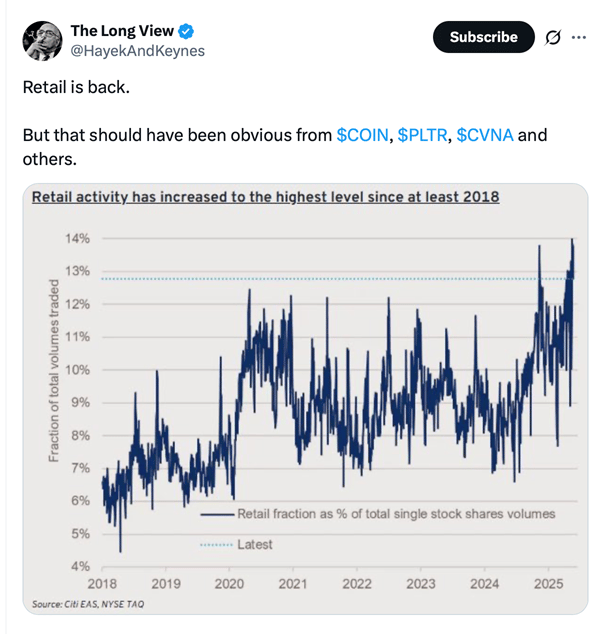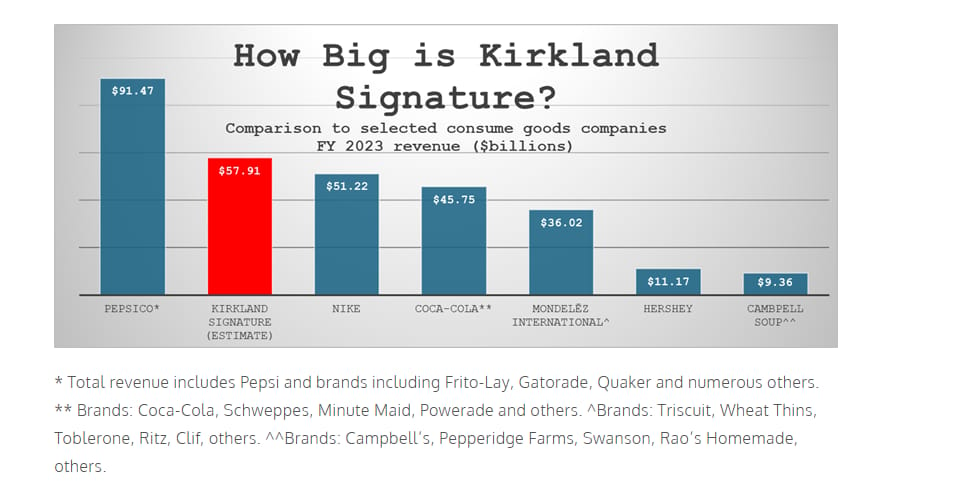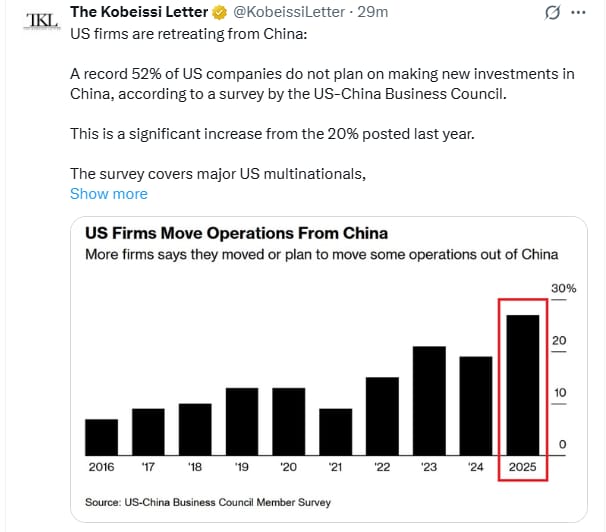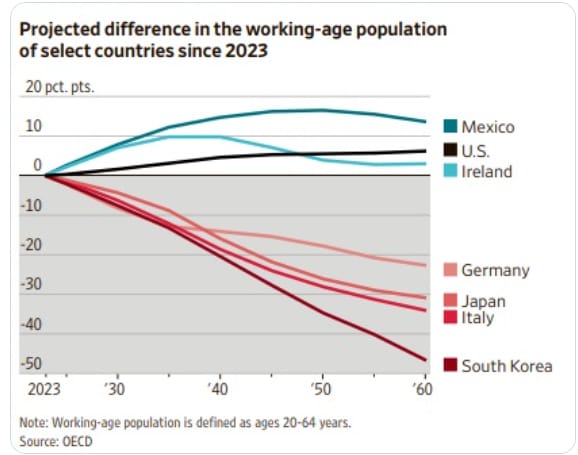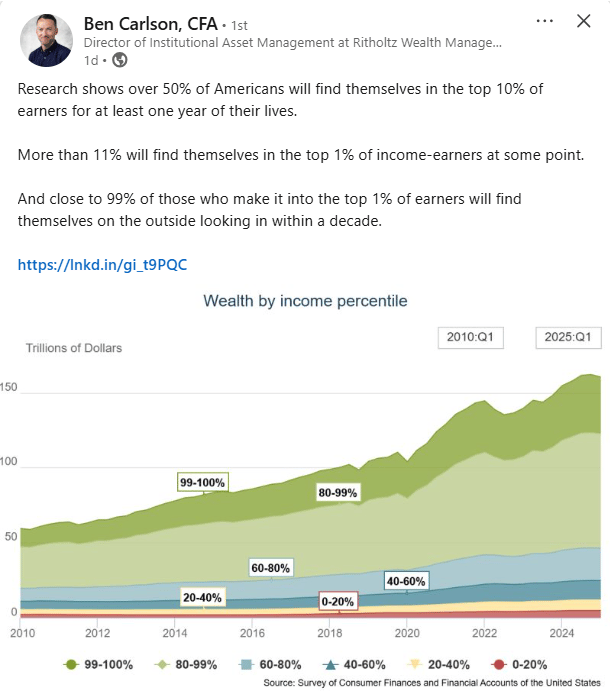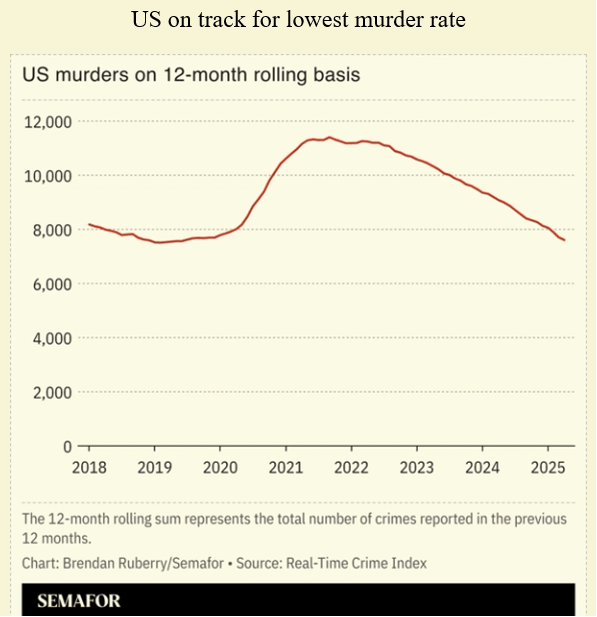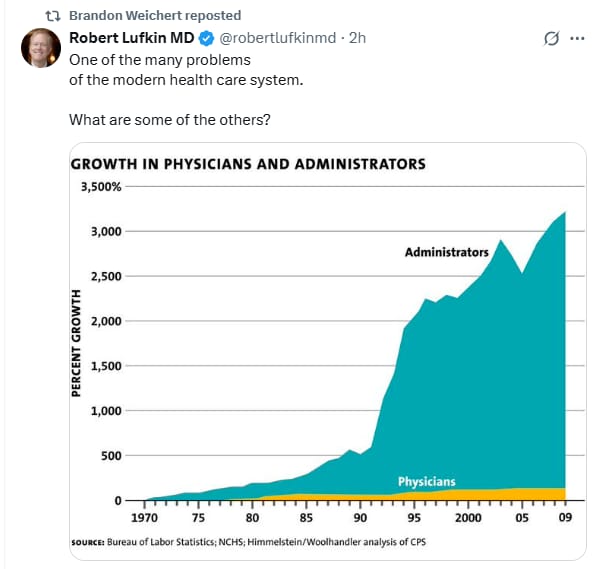- TOPLEY'S TOP 10
- Posts
- Smarter in 10 Minutes
Smarter in 10 Minutes
Where Inflation Hits
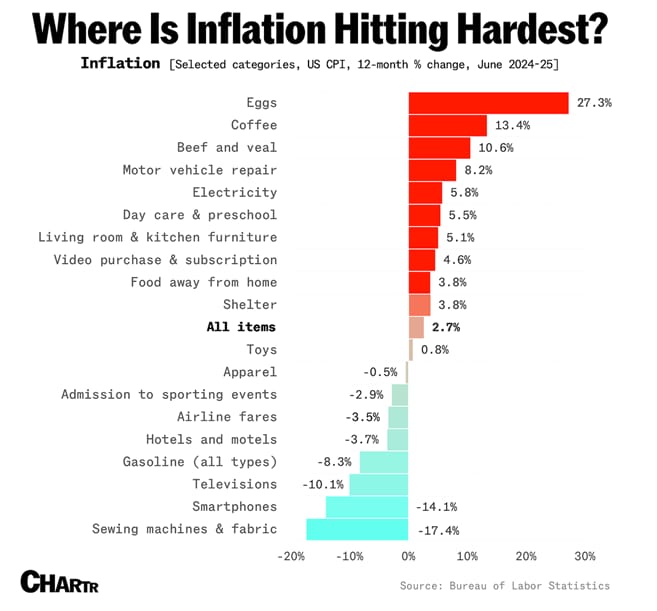
….
…
…
…
…
…
…
7. Condo Prices Dropping
Charlie Bilello: Condo prices just posted their 2nd‑biggest YoY drop on record: –2.2% in May.
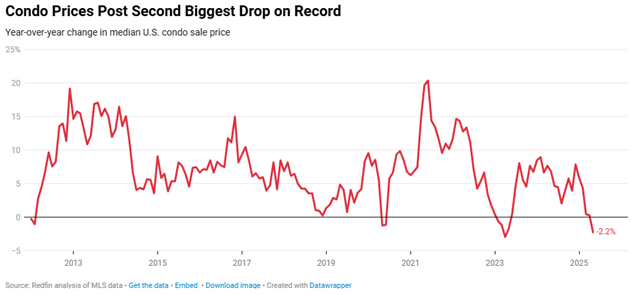
Why the slump?
80% more condo sellers than buyers
Surging HOA fees, insurance costs & special assessments
Financing hurdles
…
8. On Track for Lowest Murder Rate in History
The US is on course for the lowest murder rate in its history this year. After years of decline, crime spiked in 2020 and 2021, with murders reaching their highest since the mid-1990s. But they have since dropped precipitously, and continue to do so: The Real-Time Crime Index recorded 2,095 homicides in January to April, the most recent data available, down 20% from the same period last year. The data analyst Jeff Asher wrote in May that the figures were set to be lower than 2014’s murder rate record of 4.45 per 100,000, and that increased investment in local communities was likely a factor. Violent and property crime are both also close to record low levels, Asher wrote.
…
…
10. How Strength Training Triggers a Youth-Boosting Protein
Key points:
Resistance training boosts a youth-linked protein called CLCF1.
Cardio alone may not trigger CLCF1 in older adults.
Strength training can slow age-related muscle and bone loss.
Via Psychology Today: What if your muscles could make a molecule that slows aging? New research (Kang et al., 2025), published in Nature Communications, suggests that they can. This youth-boosting myokine is called CLCF1. Released by skeletal muscle during exercise, CLCF1 helps build muscle strength, preserve bone density, and promote longevity.
However, not all types of exercise trigger CLCF1 equally. Findings in younger vs. older people suggest that resistance training more effectively activates this exercise-induced molecule as we age.
CLCF1: A Molecule With Youthful Potential
CLCF1 (cardiotrophin-like cytokine factor 1) is a myokine, a type of signaling protein released by muscle cells (myocytes) during physical activity.
In young adults, both resistance training and high-intensity interval training (HIIT) resulted in a measurable increase in circulating CLCF1 immediately after working out. Active younger adults who regularly engaged in cardio or lifted weights had significantly higher baseline levels of this myokine compared to their less active age-matched peers.
However, in older adults, aerobic exercise (like walking on a treadmill for an hour) didn't significantly increase CLCF1 levels—either immediately after exercise or after several weeks of consistent cardio. The good news? A thrice-weekly resistance training program triggered a significant increase in CLCF1 levels after 12 weeks, rejuvenating aging muscles and bones.
This delayed response to increasing CLCF1 underscores the importance of incorporating resistance training into your weekly routine earlier in the aging process. It can also serve as a source of motivation for sticking with a strength-training program in later adulthood.
Why Cardio Alone May Not Be Enough
The latest exercise-induced myokine study also examined older mice and found a similar pattern of CLCF1 secretion. Unlike their younger counterparts, older mice didn't release much CLCF1 after a single session of high-intensity treadmill running. Over time, their baseline levels remained lower, and their muscles exhibited a stunted myokine response to cardiorespiratory exercise.
Interestingly, the gene that codes for CLCF1 didn't decline much with age, but the partner protein needed to secrete it—called CRLF1 (cytokine receptor-like factor 1)—did. Low levels of CRLF1 may explain why older muscle cells don't automatically release as much CLCF1 during aerobic activity.
To investigate how CLCF1 itself may promote resilience in aging muscles, the researchers directly administered recombinant CLCF1 to older mice. Even though the mice couldn't perform muscle-loading workouts like humans do, the injected myokine still led to gains in strength and bone density—suggesting that CLCF1 plays a direct role in supporting musculoskeletal health. On the flip side, blocking CLCF1 action blunted this myokine's ability to revive aging muscles and bones.
In a June 2025 news release, senior author Yong Ryoul Yang of the Aging Convergence Research Group explained,
"This research provides a biological basis for why exercise becomes less effective with age, and it lays the groundwork for developing new therapeutic strategies for healthy aging. In particular, the findings offer new directions for treating age-related sarcopenia and osteoporosis."
…
Did someone forward this email to you? Get your own:
Disclosure
Indices that may be included herein are unmanaged indices and one cannot directly invest in an index. Index returns do not reflect the impact of any management fees, transaction costs or expenses. The index information included herein is for illustrative purposes only.
Material for market review represents an assessment of the market environment at a specific point in time and is not intended to be a forecast of future events, or a guarantee of future results.
Material compiled by Lansing Street Advisors is based on publicly available data at the time of compilation. Lansing Street Advisors makes no warranties or representation of any kind relating to the accuracy, completeness or timeliness of the data and shall not have liability for any damages of any kind relating to the use such data.
To the extent that content includes references to securities, those references do not constitute an offer or solicitation to buy, sell or hold such security as information is provided for educational purposes only. Articles should not be considered investment advice and the information contain within should not be relied upon in assessing whether or not to invest in any securities or asset classes mentioned. Articles have been prepared without regard to the individual financial circumstances and objectives of persons who receive it. Securities discussed may not be suitable for all investors. Please keep in mind that a company’s past financial performance, including the performance of its share price, does not guarantee future results.
Lansing Street Advisors is a registered investment adviser with the State of Pennsylvania.
